Nijo Castle Map
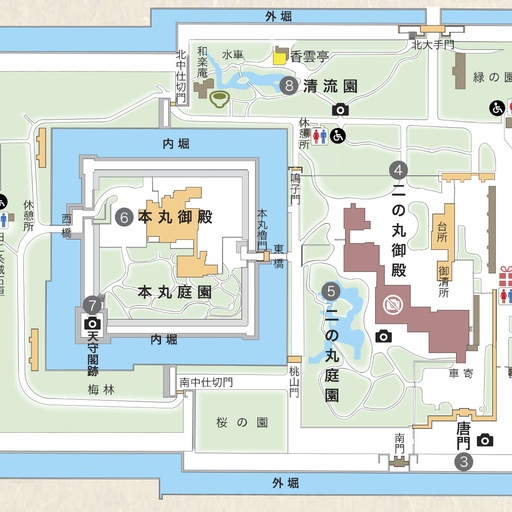
Nijo Castle is a historic site located in Nakagyo Ward, Kyoto, built by Tokugawa Ieyasu in 1603. It symbolizes the early Edo period samurai government, with highlights including the opulent Ninomaru Palace and beautiful gardens. The castle is also famous as the place where the return of political power to the emperor was declared in 1867. Registered as a UNESCO World Heritage Site in 1994, Nijo Castle is a valuable spot for learning about Japan's history and culture.
All spots information
10 spots
 Unnamed Category
Unnamed Category
Higashi Ote-mon Gate (East Gate)
![]() Unnamed Category
Unnamed Category
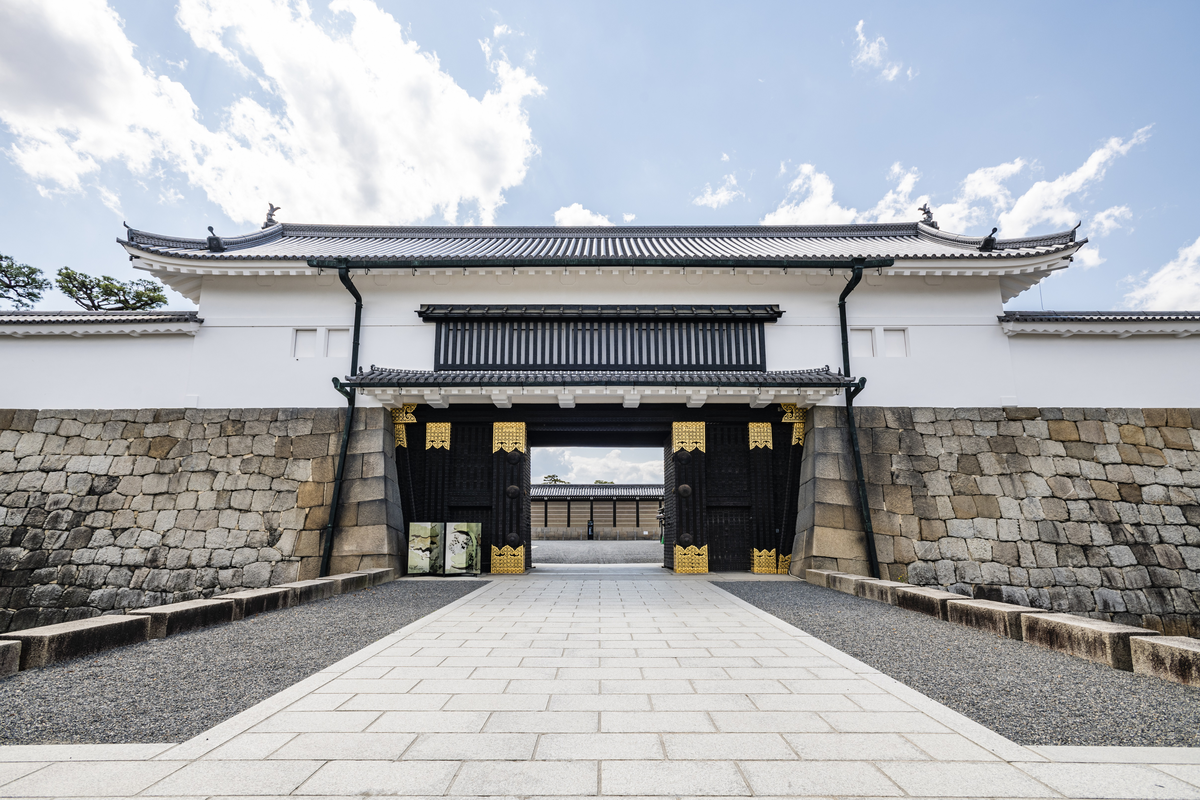
This is the main gate to the Castle. It is thought to date back to 1662. When the castle was first built, the main gate was a yagura-mon (two-storey gate) much like the current one. The gate was altered for the visit of the Emperor to a one-storey gate, so that no-one would be able to look down upon the Emperor from above, a long-standing taboo in Japan. Official Site Official Site address 〒604-8301541 Nijojocho, Nijo-dori, Horikawa-nishiiru, Nakagyo-ku, Kyoto Closed days Year-end: December 29th to 31st Opening hours 8:45am - 4:00pm (closes at 5:00pm)
Tonan Sumi-yagura (Southeast Watchtower)
![]() Unnamed Category
Unnamed Category
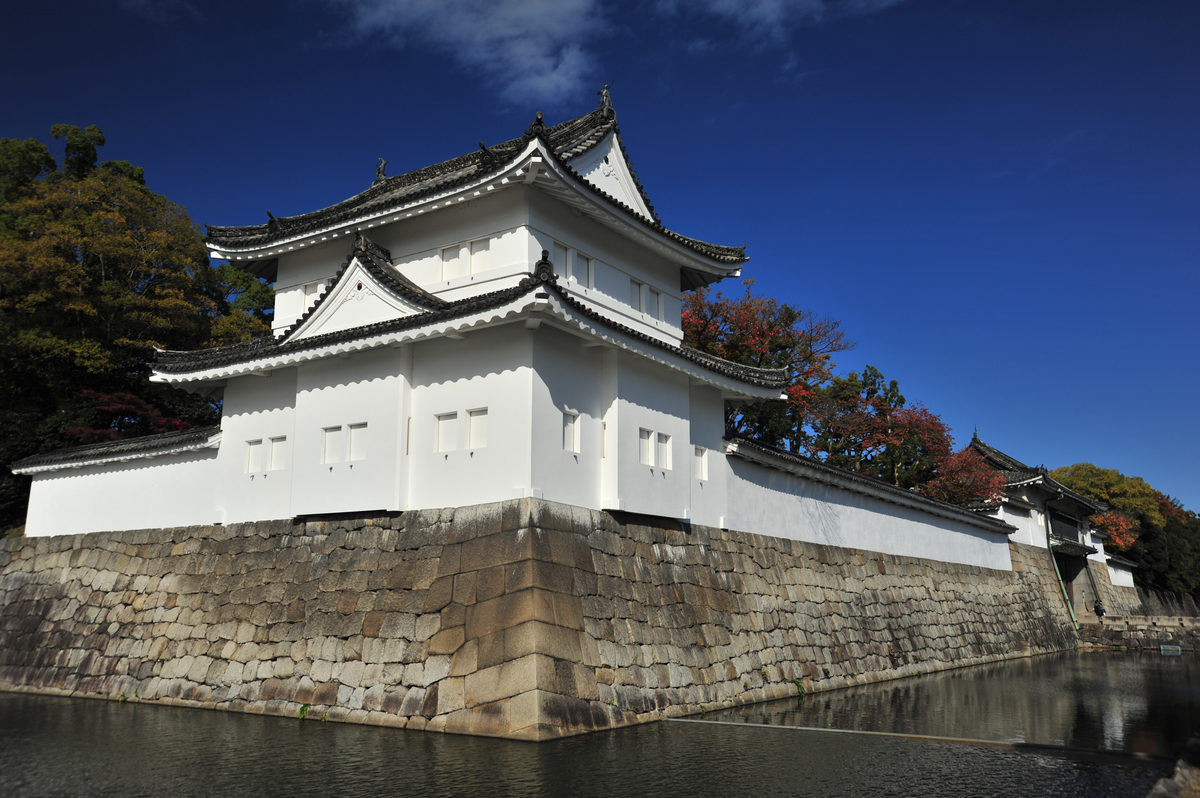
The watchtowers at the four corners of the outer moat of Nijo-jo Castle were built as lookouts, and were normally used as armories. Many of the watchtowers were destroyed in a fire in 1788, and today only the southeast and southwest watchtowers survive. Official Site Official Site address 〒604-8301541 Nijojocho, Nakagyo Ward, Kyoto City Closed days Year-end: December 29th to 31st Opening hours 8:45am - 4:00pm (closes at 5:00pm)
Kara-mon Gate
![]() Unnamed Category
Unnamed Category
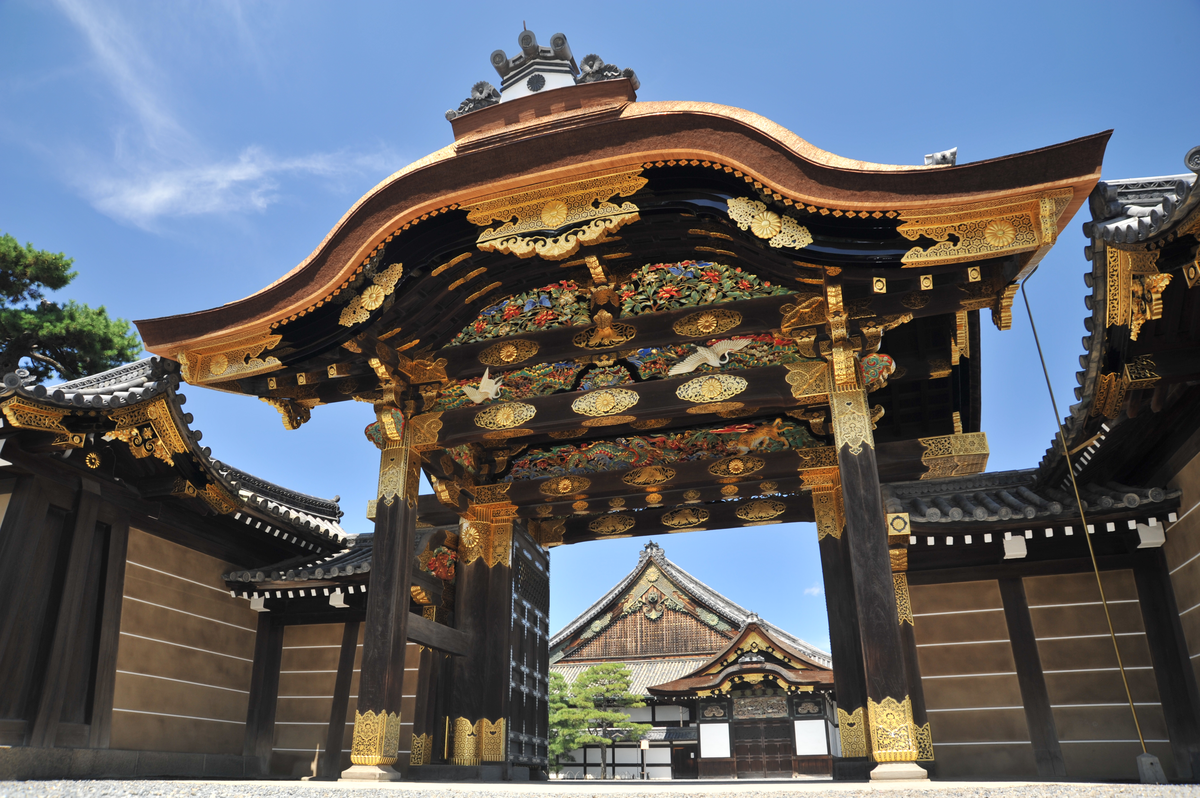
The Kara-mon Gate stands at the entrance to the Ninomaru-goten Palace. Gate architecture is used to indicate status, with the Karamon gate representing the highest status, indicated by the cusped gable to the front and back of the roof, and the use of cypress bark rather than copper or tile for the roofing. The gate has four supporting pillars, and has magnificent and brilliantly colored carvings of cranes, pine, bamboo, and plum blossoms, symbolizing longevity. The carved lions protect the Palace. A 2013 restoration returned the gate to its former glory. Official Site Official Site address 〒604-8301541 Nijojocho, Nijo-dori, Horikawa-nishiiru, Nakagyo-ku, Kyoto Closed days Year-end: December 29th to 31st Opening hours 8:45am - 4:00pm (closes at 5:00pm)
Ninomaru-goten Palace
![]() Unnamed Category
Unnamed Category
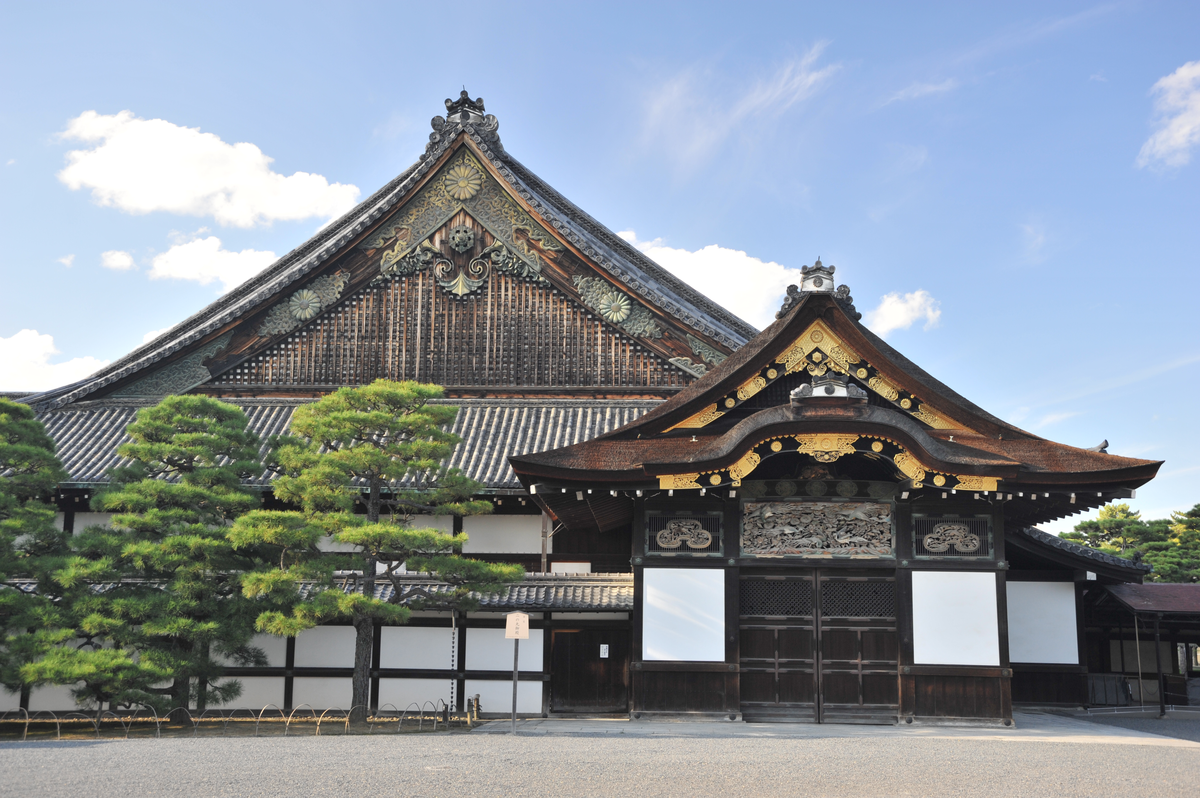
The Palace consists of six connected buildings arranged in a diagonal line from the southeast to the northwest. The Palace has 33 rooms and over 800 tatami mats, and is decorated with paintings by the Kano School (replicas). Subjects include the Matsutaka-zu (pine and hawk), tigers, and leopards, all of which stress the authority of the Shogun, as well as cherry blossoms and other flowers representing the four seasons. Official Site Official Site address 〒604-8301541 Nijojocho, Nijo-dori, Horikawa-nishiiru, Nakagyo-ku, Kyoto Closed days Year-end: December 29th to 31st Opening hours 8:45am - 4:00pm (closes at 5:00pm) Ninomaru Palace is closed on these days Every Tuesday in January, July, August, and December*, December 26th to 28th, January 1st to 3rd *If the relevant days are holidays, Ninomaru Palace will be open to the public, but will be closed to the public the following day.
Ninomaru Garden
![]() Unnamed Category
Unnamed Category
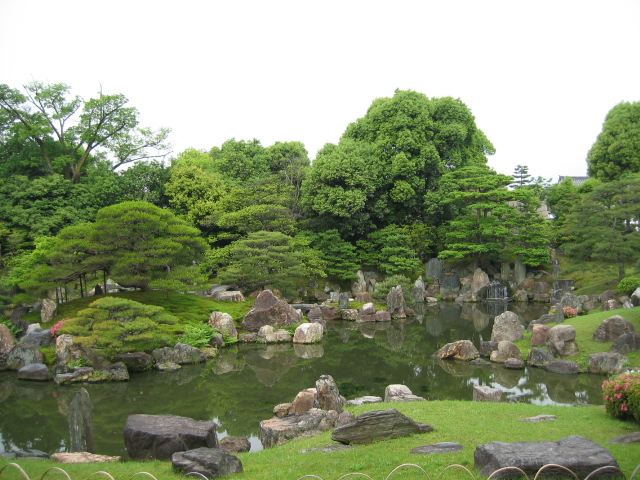
The Ninomaru Garden was redesigned by Kobori Enshu, the commissioner of works for the 1626 Imperial Visit. It is a classical Shoin-zukuri style garden, with a large Horai-jima island (symbolizing Paradise) flanked by a crane island and a turtle island, both metaphors for longevity. The garden was redesigned to be viewed from three different directions: from the Ohiroma and Kuro-shoin of the Ninomaru-goten Palace, and from the Gyoko-goten Palace (dismantled). Official Site Official Site address 〒604-8301541 Nijojocho, Nijo-dori, Horikawa-nishiiru, Nakagyo-ku, Kyoto Closed days Year-end: December 29th to 31st Opening hours 8:45am - 4:00pm (closes at 5:00pm)
Nijo-jo Castle Painting Gallery
![]() Unnamed Category
Unnamed Category
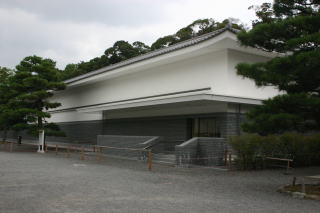
The original wall paintings from the Ninomaru-goten Palace are on display here, allowing visitors to view the paintings up close. The exhibitions change quarterly, and the museum is open 240 days a year. Official Site Official Site
Seiryu-en Garden
![]() Unnamed Category
Unnamed Category
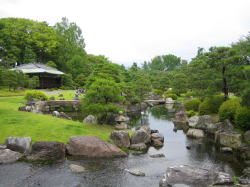
This garden was laid out in 1965, using some of the buildings, trees, and stones from the garden of the Kyoto mansion of the wealthy Suminokura merchant family. Seiryu-en Garden is a fusion of Eastern and Western styles. The Japanese garden features two teahouses, the Koun-tei and the Waraku-an, and is complemented by the lawns of the Western-style garden. Official Site Official Site address 〒604-8301541 Nijojocho, Nijo-dori, Horikawa-nishiiru, Nakagyo-ku, Kyoto Closed days Year-end: December 29th to 31st Opening hours 8:45am - 4:00pm (closes at 5:00pm)
The base of the keep tower
![]() Unnamed Category
Unnamed Category
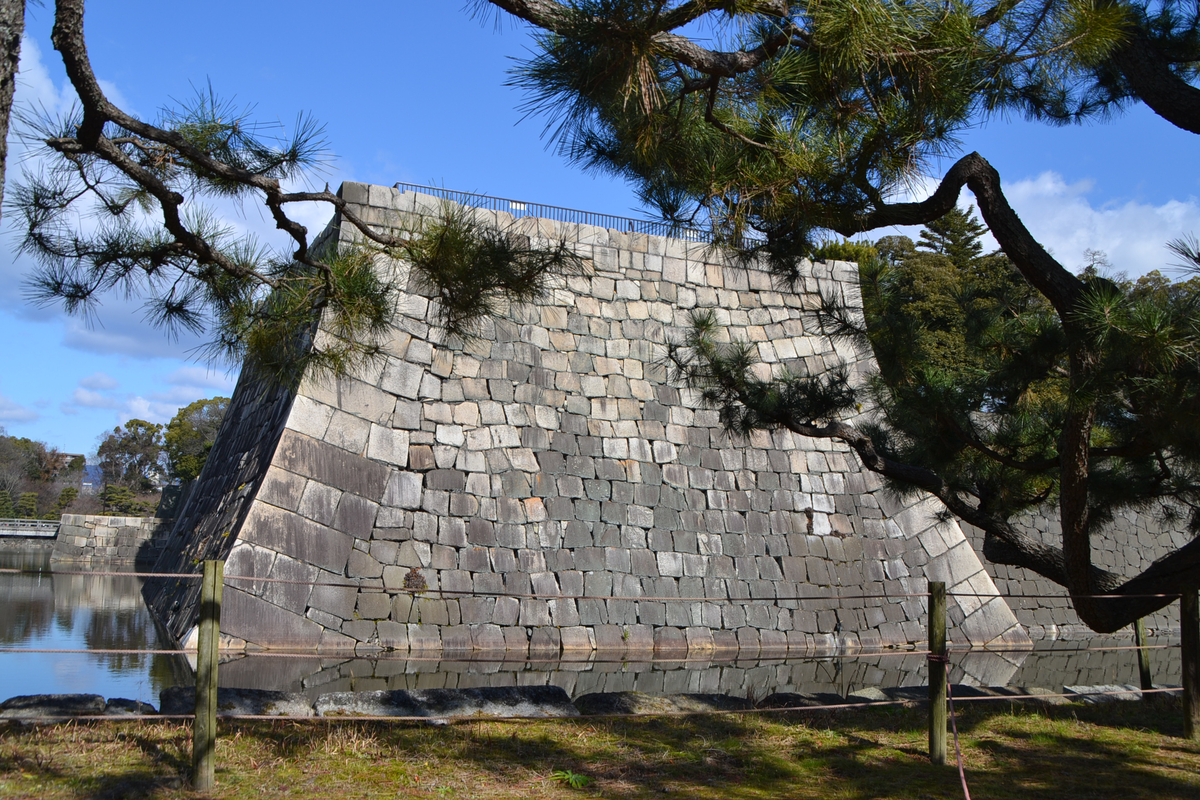
A five-storey keep tower, with 6 floors inside, used to stand at the south-west corner of the Honmaru. The keep tower was moved here from the Fushimi Castle in southern Kyoto. In 1750, the tower was struck by lightning and burned down. It was not rebuilt, but the stone ramparts on which it previously stood still remain and provide expensive views of the Honmaru-goten Palace, Honmaru Gardens, and the city of Kyoto. Official Site Official Site address 〒604-8301541 Nijojocho, Nijo-dori, Horikawa-nishiiru, Nakagyo-ku, Kyoto Closed days Year-end: December 29th to 31st Opening hours 8:45am - 4:00pm (closes at 5:00pm)
Honmaru-goten Palace
![]() Unnamed Category
Unnamed Category
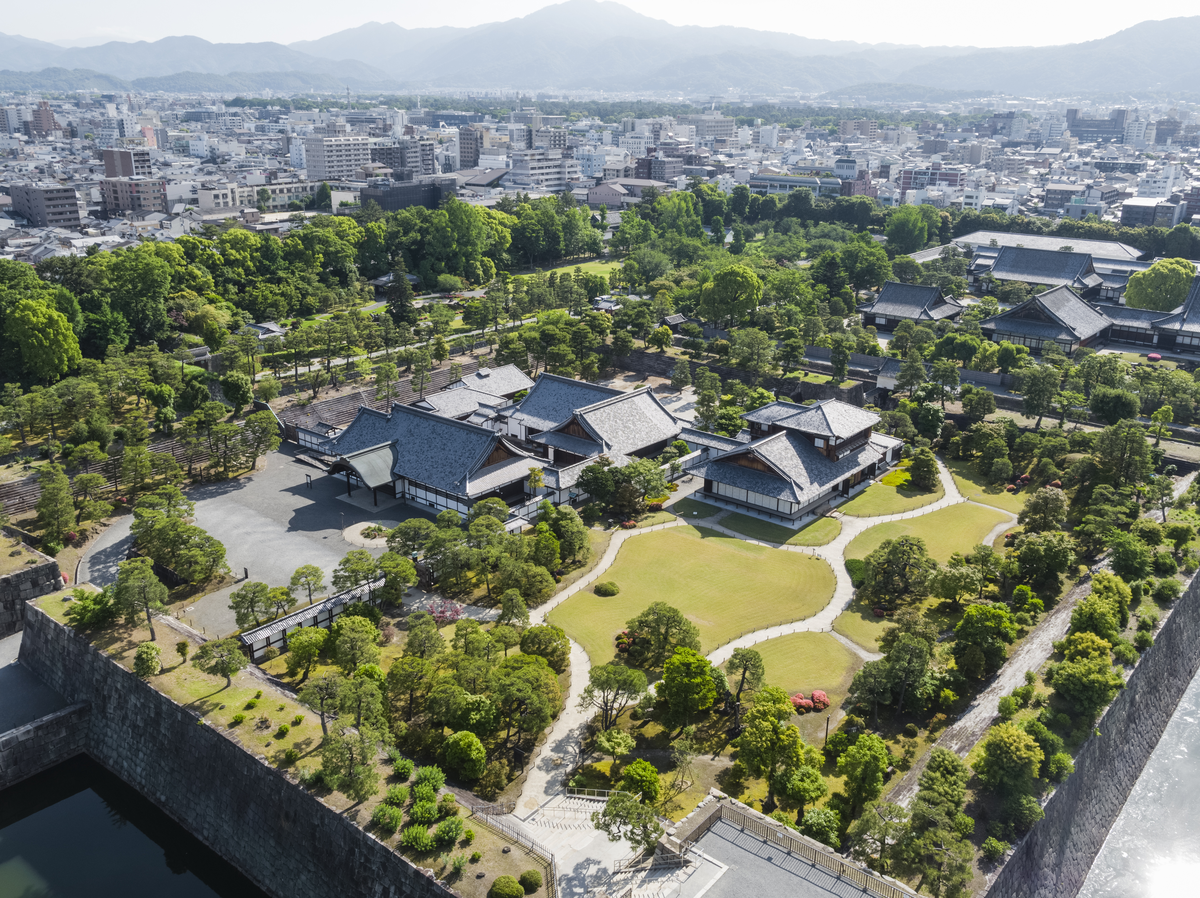
The present Honmaru-goten Palace was moved here inside the inner moat of the Nijo-jo Castle in 1893, from the Katsura-no-miya Palace, which stood in the northeast section of the grounds of the Kyoto Imperial Palace. It is a very rare survival of the palace architectural style of an imperial princely family, and, as such, has been designated as an Important Cultural Property by the Japanese government. Official Site Official Site address 〒604-8301541 Nijojocho, Nijo-dori, Horikawa-nishiiru, Nakagyo-ku, Kyoto Closed days Year-end: December 29th to 31st Opening hours 8:45am - 4:00pm (closes at 5:00pm) Ninomaru Palace is closed on these days Every Tuesday in January, July, August, and December*, December 26th to 28th, January 1st to 3rd *If the relevant days are holidays, Ninomaru Palace will be open to the public, but will be closed to the public the following day.
Honmaru Garden
![]() Unnamed Category
Unnamed Category
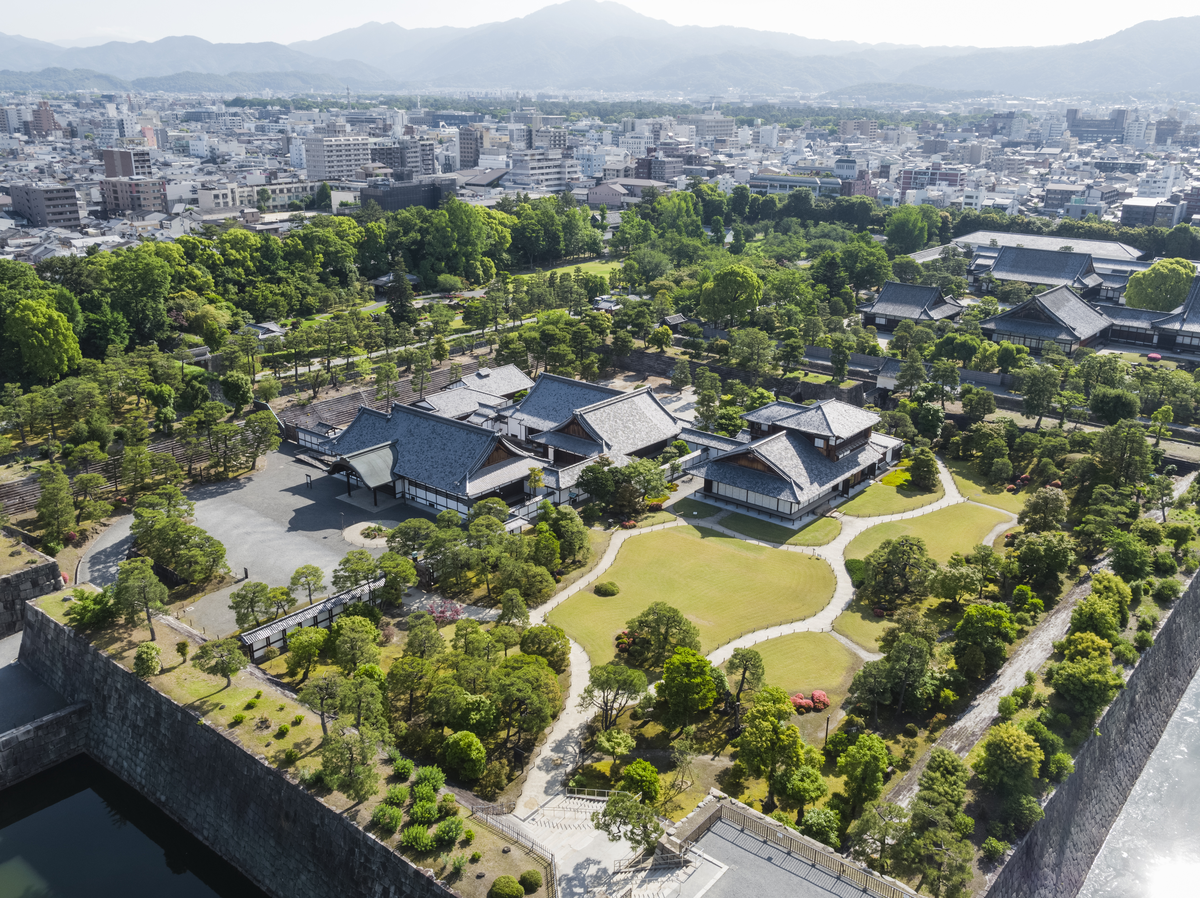
The Honmaru Garden to the south of the Palace was created on the occasion of a visit by the Emperor Meiji (1852-1912) and later redesigned. Pathways winding through the lawns and a hill in the southeast corner provide pleasant backdrops to enjoy the changing of the seasons. Official Site Official Site address 〒604-8301541 Nijojocho, Nijo-dori, Horikawa-nishiiru, Nakagyo-ku, Kyoto Closed days Year-end: December 29th to 31st Opening hours 8:45am - 4:00pm (closes at 5:00pm)